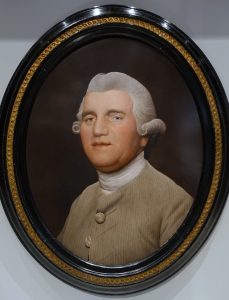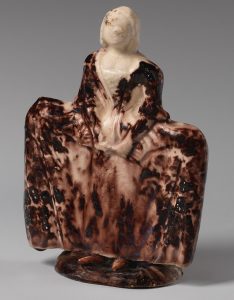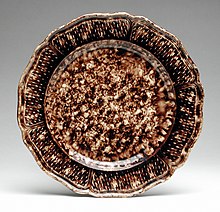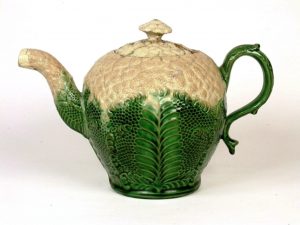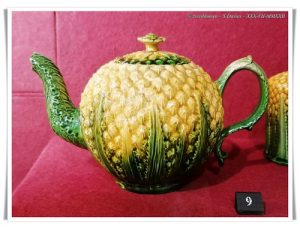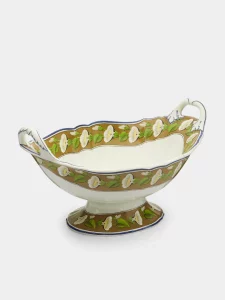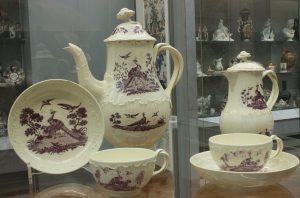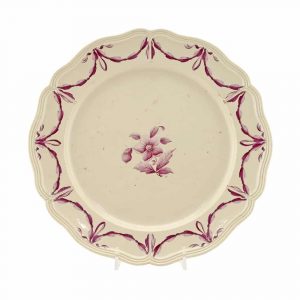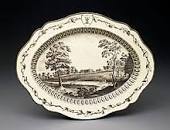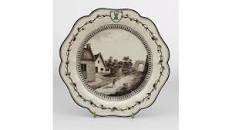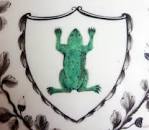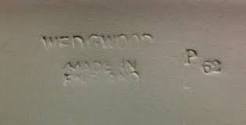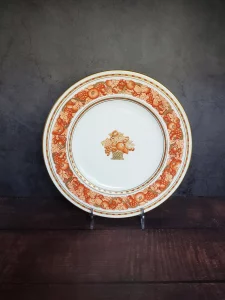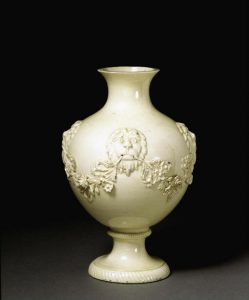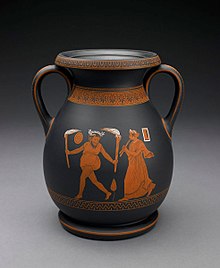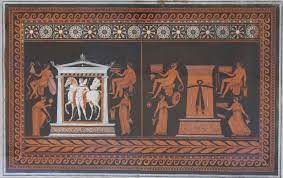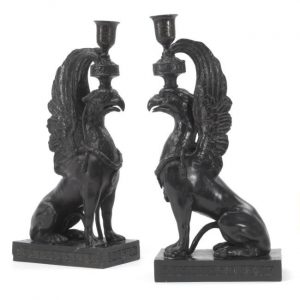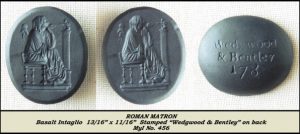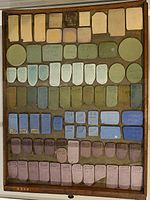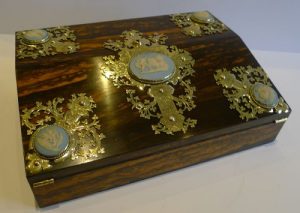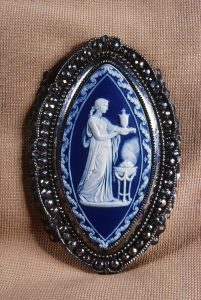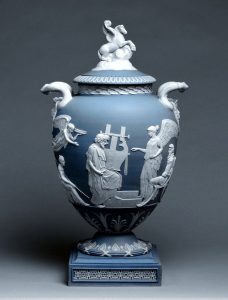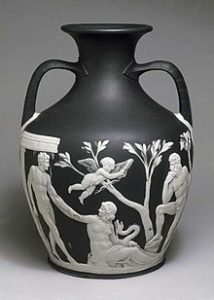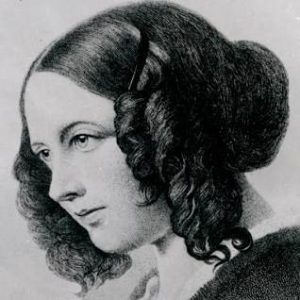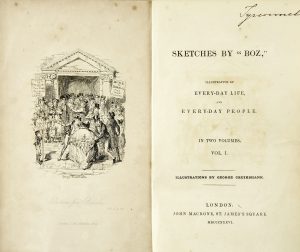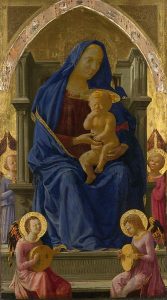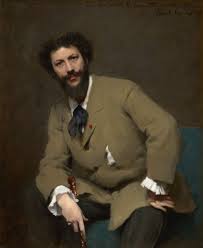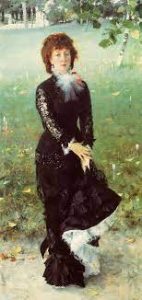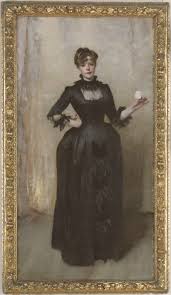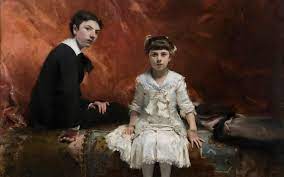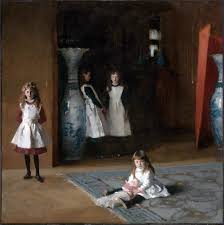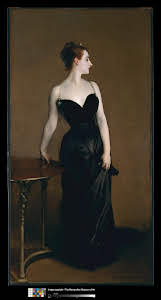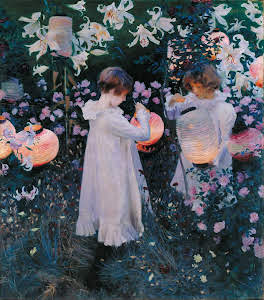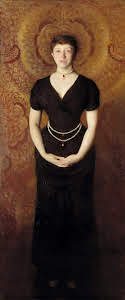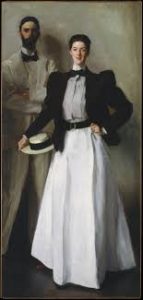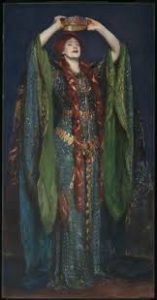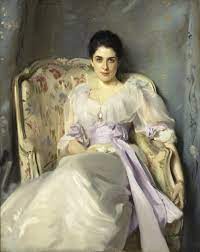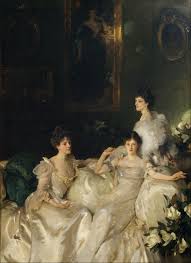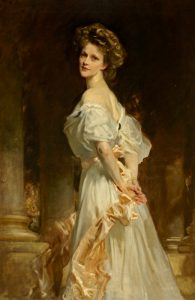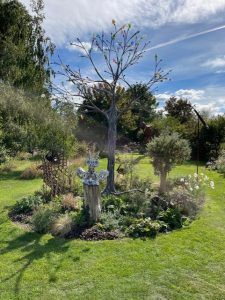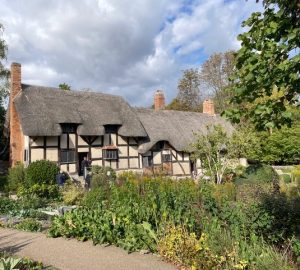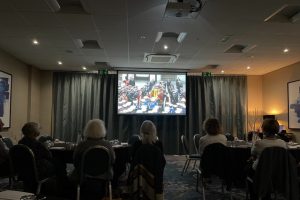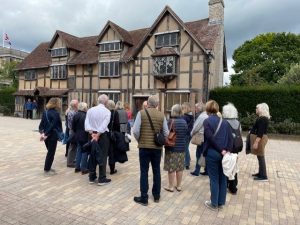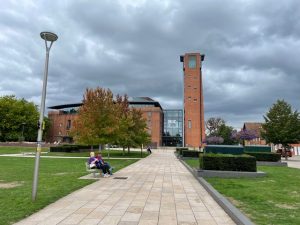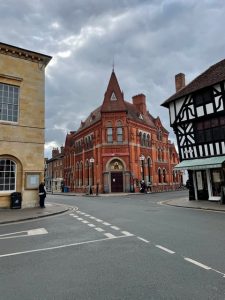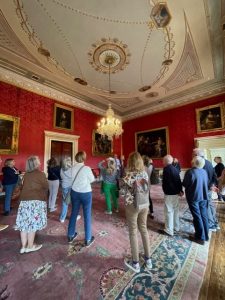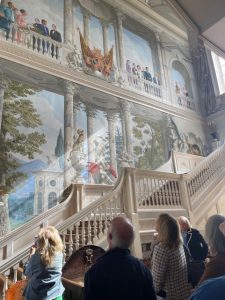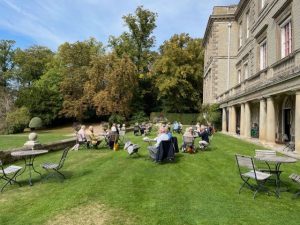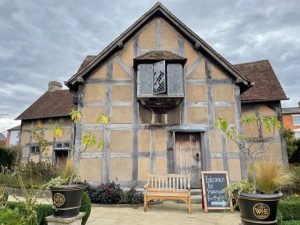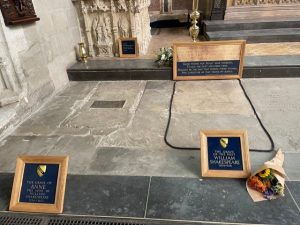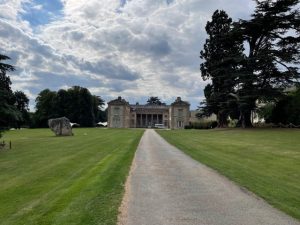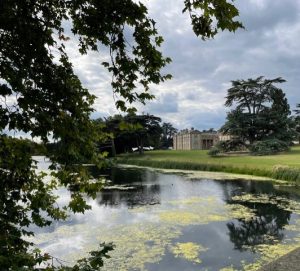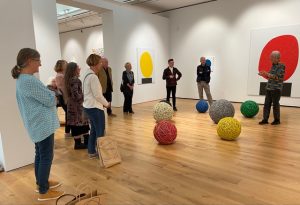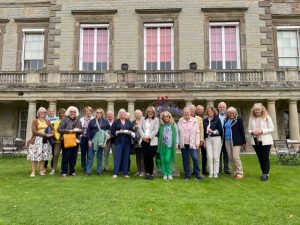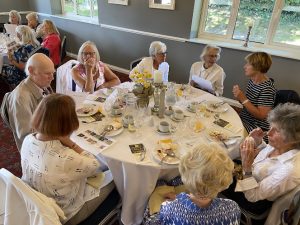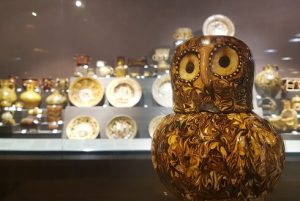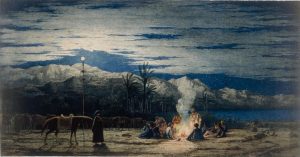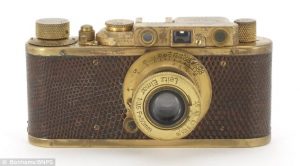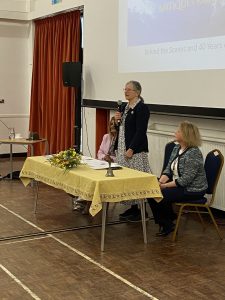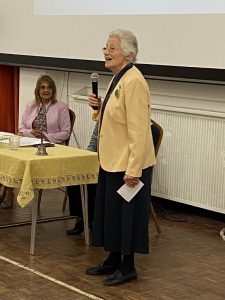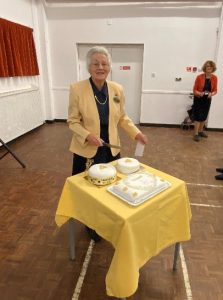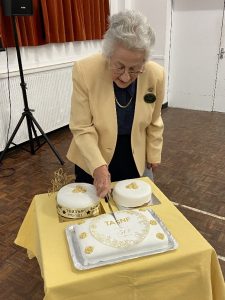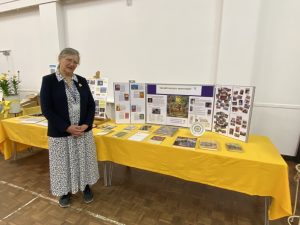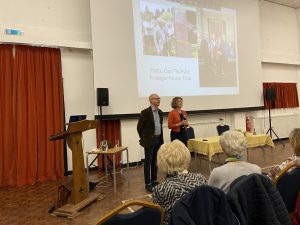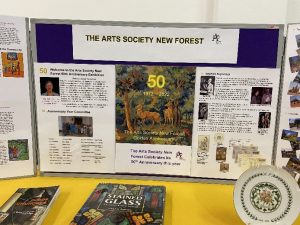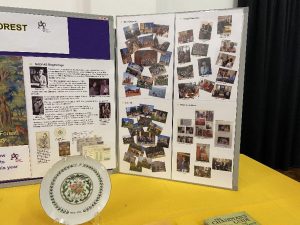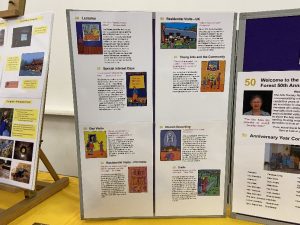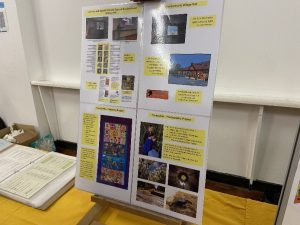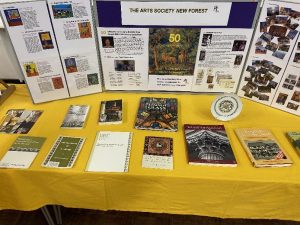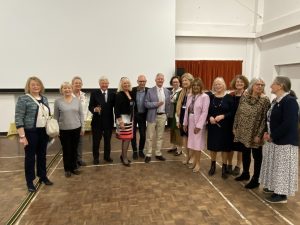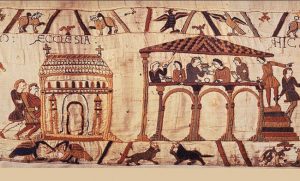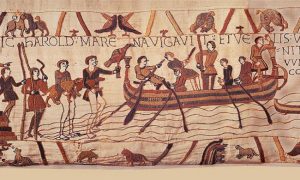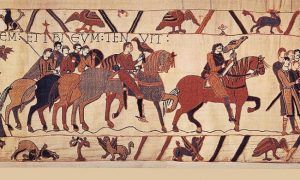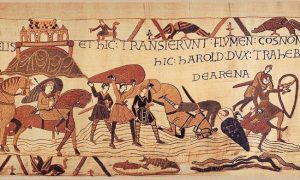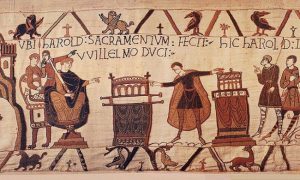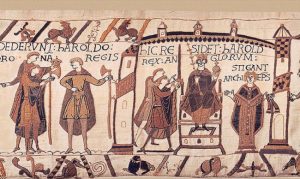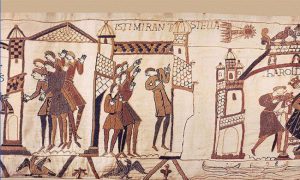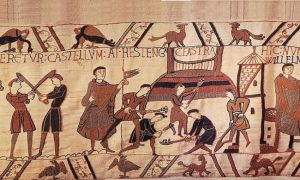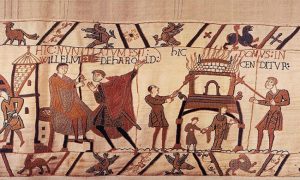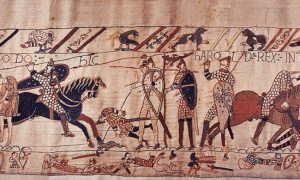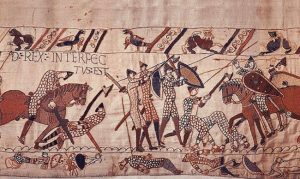The Queen of Instruments -The Lute Within Old Master Paintings
A lecture by Adam Busiakiewicz
Adam began his enthralling lecture by telling us that the lute was the second most important instrument and then inviting us to suggest what the most important instrument was – none of us gave the correct answer – it is the voice.
Not only were we then taken into the world of the lute in art, but Adam also entertained us by playing several pieces on his lute and thereby demonstrating the beauty of the music of this instrument.
So now, realising the importance of the lute, we were taken on an historical journey through Old Master paintings where the lute is featured. The background and relevance he gave us to these paintings was fascinating.
He began with ‘The Party in the Open Air ‘ (1590-1593 )where the group is being entertained by a lute player.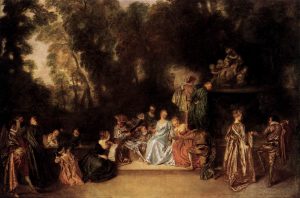
Adam pointed out that rarely do we see art and music together and yet they are very interwoven.
In the ‘Fete Champetre‘ by Titian or Giorgione the lute is shown again as an entertainment for the rich.
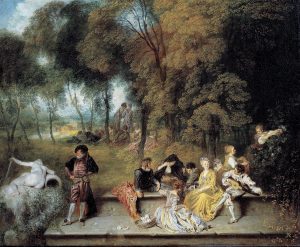
The ‘Pastoral Concert ‘attributed to Titian shows the lute as the source of music and entertainment.

According to Vasari, Leonardo went to the Italian Courts initially as a musician and not as a painter.
The lute is a very ancient musical instrument which came into western Europe in the 13th century. It may have been brought in by the Crusaders.
At that time it was an instrument of the wealthy which became so popular it appears in Renaissance paintings, as in Masaccio’s ‘Virgin and Child‘ (1426) showing how very contemporary they were with the two cherubs in the foreground playing the lute.
Early lutes were much smaller and played with a plectrum, but by the 16th century lutes had become much larger in order to accommodate more strings.
Hans Frei was one of the early masters of lute making based in Bologna in the 16th century. He helped to define the form of the lute.
The pitch of an archlute varied according to its size The Archlute 1637 had an extended range to accompany a singer.It was played throughout the 17th century
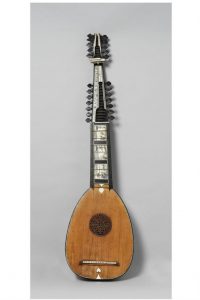
In Holbein’s ‘Ambassadors‘ the lute is placed right at the centre of the painting. Adam drew our attention to the other objects in the picture, considered to be demonstrating the discord between the religious and the secular ( note the contrasting dress off the two men) which is also shown with the broken string of the lute.
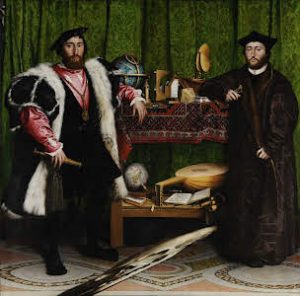
Henry viii was a fantastic lutist and his skill was much admired in his day. The lute was particularly popular because it was so easy to carry around.
The painting by Durer ‘Underweysung der Messung’ (1471) demonstrates how artists liked to draw the lute as it demonstrated their skills. Here a student is being instructed to draw using a lute as the object.
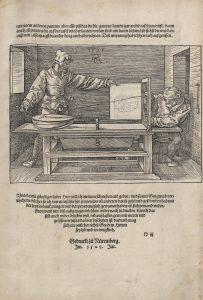
In Titian’s ‘Two Boys’ said to be of the Pesaro Family ‘ the symmetry and duality is further shown by the lute which is used to demonstrate the harmony between the boys.
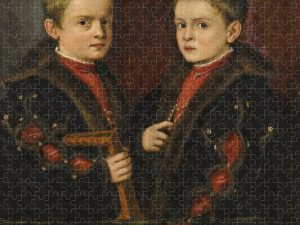
Whilst ‘Three Women Making Music” shows that it was not just men who played the lute. In fact Elizabeth 1st was an excellent flute player.
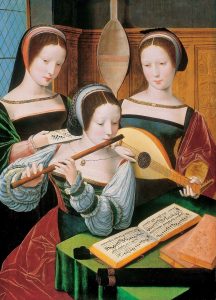
Jan Brueghel the elder painted ‘Orpheus‘ (1594) showing Orpheus playing music on the lute which was so beautiful that it calmed all the evil creatures.
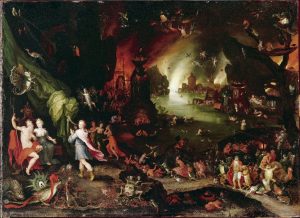
When we look at ‘Portrait of an Unknown Man ‘ painted in the 16th century we are led to ask if it is a farewell to arms with the sword behind the man and the lute in the front
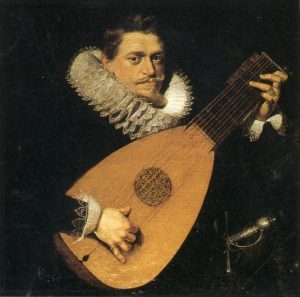
‘Venus and the Lute Player‘ by Titian raises the great debate about which is most valuable – music or art. Adam commented on how disinterested Venus looked.
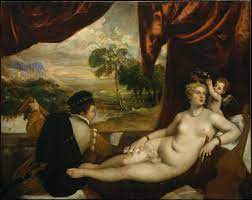
The English wrote some of the best music.
As Adam showed us this painting he asked if we thought the musician was male or female and the majority of us were wrong as ‘The Lute Player’ by Caravaggio (1595) features a boy, a castrato singer, who were at that, time the most popular singers.Note also the broken lute and the bruised fruit.
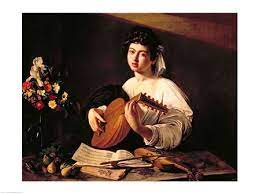
Caravaggio paints a boy tuning his instrument in ‘The Musicians‘ with Venus on his left indicating that the boys are learning the art of love.
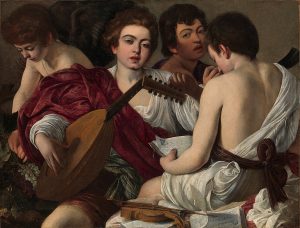
Brugghen demonstrates what it is like to be young in ‘Man Playing a Lute‘ With a flamboyantly dressed musician
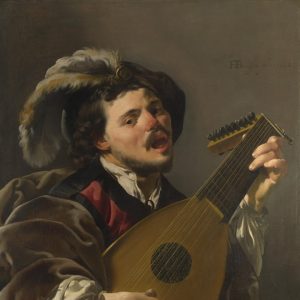
This concept is repeated in ‘The Four Ages of Man ‘ by Valentin de Bourgogne where he paints the youth playing the lute.
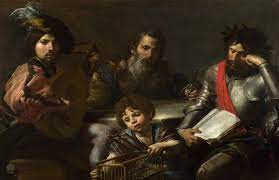
Lutes can also be used to remind us, not of the joys of life, but quite the reverse – as in ‘Vanitas‘ by Claesz is a symbolic work of art showing the transience of life, the futility of pleasure, and the certainty of death
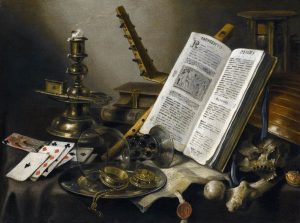
Also Bruegel the Elder’s painting “Triumph of Death‘ where the lover is playing but there is a skeleton behind them ( in the bottom right hand corner)
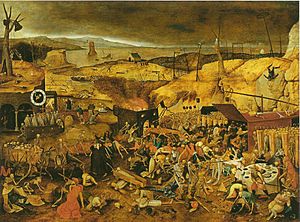
In contrast Vermeer in ‘Musical Trio ‘shows how these instruments should be enjoyed, requiring people to be close and intimate as the lute is very quiet.
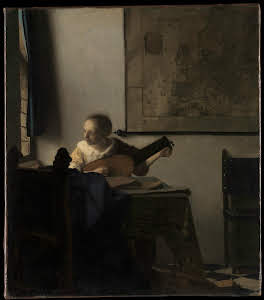
In his ‘Woman with a Lute‘ there is evidence of more intimacy with a lute as the lady is looking out of the window possibly waiting for a visitor to join with her as there is a viola on the floor and several song books
The question we ask is – ‘why don’t we see the lute any more ? ‘and one of the reasons is that Opera began and it needed a louder sound from the accompanying instruments. An instrument called a Thorbio -which was a much longer lute, was made in an attempt to provide greater volume – but it was too difficult to use. The lute had out-engineered itself. In Allegory of Music a musician is playing the Thorbia and we can clearly see the difficulties.
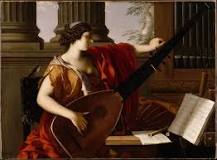
In ‘Les Charmes de la Vie ‘ by Watteau, the group is busy and not listening to the musician. The lute was no longer the centre of attention.
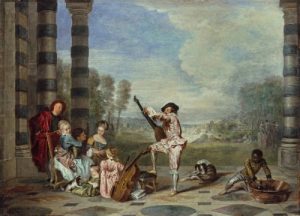
The last time we see it in English paintings it is an object of fun as in Zoffany’s ‘The Sharp Family‘ where we note the lute is played by the most mature lady of the group.
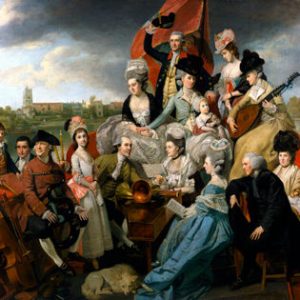
Adam concluded this fascinating talk by asking us to not only look at a painting but also to ask ourselves – what does this painting sound like?
and perhaps we will, as we were all so inspired by the lecture.


